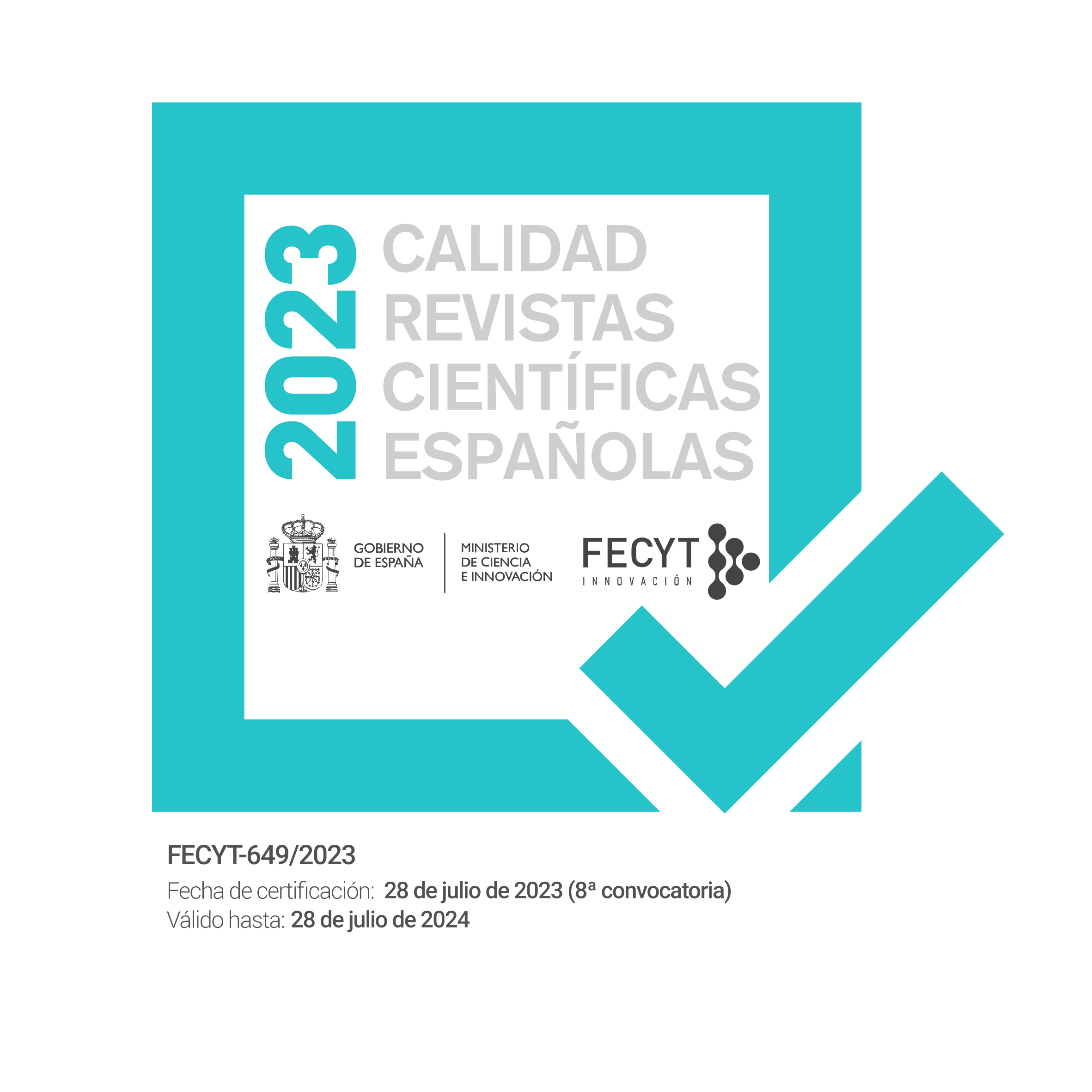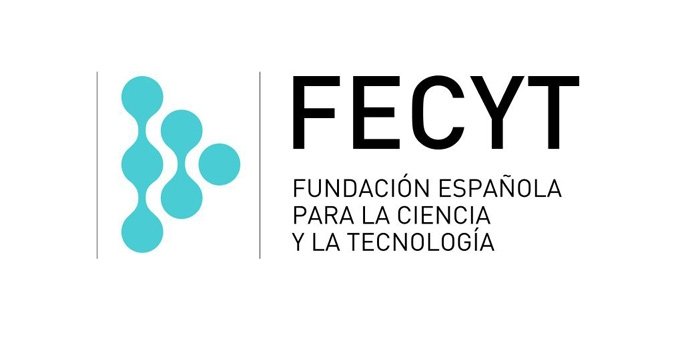Customer orientation of service employees in family businesses in the hotel sector
Resumen
The business interactions between front-line employees and customers are crucial to evaluating service quality and for a business’ performance. A gap has been identified in the literature on both the customer orientation of service employees (COSE) and family businesses (FBs); both concepts never have been studied together before. Due to this fact, we present a concept that develops a theoretical model based on Hennig-Thurau (2004). This model drives research about the COSE and FBs in the hotel sector. The two main contributions are the following: (1) electronic word-of-mouth (eWOM) is proposed as a consequence of COSE within FBs and (2) a questionnaire has been developed from relevant subscales to measure COSE and two possible consequences derived from it (Customer Satisfaction and eWOM). A database from Iberic Balance Analysis System (SABI) has been selected to study these variables in the hotel sector, and it will be used in a proposed future empirical study that is expected to provide support for the theory.
Descargas
Citas
Abubakar, B. and Mavondo, F. (2014): “Tourism destinations: antecedents to customer satisfaction and positive word-of-mouth”, Journal of Hospitality Marketing & Management, vol. 23, nº 8, pp. 833-864.
Alcorn, P. B. (1982). Success and survival in the family-owned firm. New York.
Anderson, E. W., Fornell, C. and Rust, R. T. (1997): “Customer satisfaction, productivity, and profitability: Differences between goods and services”, Marketing science, vol. 16, nº 2, pp. 129-145.
Anderson, E. W. (1998): “Customer satisfaction and word of mouth”, Journal of Service Research, vol. 1, nº 1, pp. 5-17.
Anosike, U. P., and Eid, R. (2011): “Integrating internal customer orientation, internal service quality, and customer orientation in the banking sector: an empirical study”, The service industries journal, vol. 31, nº 14, pp. 2487-2505.
Argyle, M. (1983): The psychology of interpersonal behaviour. Penguin press, New York, US.
Berkman, H. W. and Gilson, C. (1986). Consumer Behavior: Concepts and Strategies, Boston: Kent Pub.
Belarmino, A. M. and Koh, Y. (2018): “How E-WOM motivations vary by hotel review website”, International Journal of Contemporary Hospitality Management, vol. 30, nº 8, pp. 2730-2751.
Bowen, D. E. and Schneider, B. (1985): “Boundary-spanning role employees and the service industry: some guidelines for management and research”, The Service Encounter. D. C. Heath, Lexington, M. A., pp. 127-47.
Brady, M. and Cronin J. (2001): “Customer orientation: Effects on customer service perceptions and outcomes behaviors”, Journal of Service Research, vol. 3, nº 3, pp. 249-51.
Brown, T. J., Mowen, J. C., Donavan D. T. and Licata, J. W. (2002):” The customer orientation of service workers: Personality trait effects on self- and supervisor performance ratio”, Journal of Marketing Research, vol. 39, nº 1, pp. 110-119.
Buhalis, D. and Law, R. (2008): “Progress in information technology and tourism management: 20 years on and 10 years after the Internet—The state of eTourism research”, Tourism Management, vol. 29, nº 4, pp. 609-623.
Cantallops, A. S. and Salvi, F. (2014): “New consumer behavior: A review of research on eWOM and hotels”, International Journal of Hospitality Management, vol. 36, nº 1, pp. 41-51.
Carroll, B.A. and Ahuvia, A.C. (2006): “Some antecedents and outcomes of brand love”, Marketing Letters, vol. 17, nº 2, pp. 79-89.
De Matos, C. A. and Rossi, C. A. V. (2008): “Word-of-mouth communications in marketing: a meta-analytic review of the antecedents and moderators”, Journal of the Academy of Marketing Science, vol. 36, nº 4, pp. 578-596.
Di Mascio, R. (2010): “The service models of frontline employees”, Journal of Marketing, vol. 74, nº 4, pp. 63-80.
European Commission (2008): [online] https://ec.europa.eu/growth/smes/promoting-entrepreneurship/we-work-for/family-business_en (Accessed February 2018).
Family Business Institute (2017): [online] http://www.iefamiliar.com/cifras/1 (Accessed 15 October 2018).
Gallo, M.A., Cappuyns, K. and Estapé, M. J. (1995). “La continuidad de las empresas familiares”, Research paper No. 290. IESE.
Gallo, M. Á., Tàpies, J. and Cappuyns, K. (2004): “Comparison of family and nonfamily business: Financial logic and personal preference”, Family Business Review, vol. 17, nº 4, pp. 303-318.
Gallo, M. A. (2009): La empresa familiar multigeneracional: el papel de la familia propietaria. Navarra: EUNSA.
Gersick, K. E., Davis, J. A., Hampton, M. M. and Lansberg, I. (1997). Empresas familiares: generación a generación. México: McGraw-Hill.
Godes, D. and Mayzlin, D. (2004): “Using online conversations to study word-of-mouth communication”, Marketing science, vol. 23, nº 4, pp. 545-560.
Ha, Y. and Hyunjoo, Im. (2012): “Role of web site design quality in satisfaction and word of mouth generation”, Journal of Service Management, vol. 23, nº. 1, pp. 79-96.
Hartline, M. D. and Ferrell, O. C. (1996): “The management of customer-contact service employees: an empirical investigation”, Journal of Marketing, vol. 60, nº 4, pp. 52-70.
Hennig-Thurau, T. and Thurau, C. (2003): “Customer orientation of service employees–Toward a conceptual framework of a key relationship marketing construct”, Journal of Relationship Marketing, vol. 2, nº 3, pp. 23–41.
Hennig-Thurau, T. (2004): “Customer orientation of service employees: Its impact on customer satisfaction, commitment and retention”, International Journal of Service Industry Management, vol. 15, nº 5, pp. 460–478.
Hennig-Thurau, T., Gwinner, K. P., Walsh, G. and Gremler, D. D. (2004): “Electronic word-of-mouth via consumer-opinion platforms: what motivates consumers to articulate themselves on the internet?”, Journal of interactive marketing, vol. 18, nº 1, pp. 38-52.
Ifie, K. (2014): “Customer orientation of frontline employees and organizational commitment”, The Service Industries Journal, vol. 34, nº 8, pp. 699-714.
Kang, J. and Hyun, S. S. (2012): “Effective communication styles for the customer-oriented service employee: Inducing dedicational behaviors in luxury restaurant patrons”, International Journal of Hospitality Management, vol. 31, nº 3, pp. 772-785.
Kelley, S. W. (1992): “Developing customer orientation among service employees”, Journal of the Academy of Marketing Science, vol. 20, nº 1, pp. 27-36.
Kim, W. G. and Moon, Y. J. (2009): “Customers’ cognitive, emotional, and actionable response to the servicescape: A test of the moderating effect of the restaurant type”, International Journal of Hospitality Management, vol. 28, nº 1, pp. 144-156.
Kohli, A. K. and Jaworski, B. J. (1990): “Market orientation: The construct, research propositions and management implications”, Journal of Marketing, vol. 54, nº 2, pp. 1-18.
Kotler, P., Saliba, S., and Wrenn, B. (1991). Marketing management: Analysis, planning, and control: Instructor's Manual. Prentice-hall.
Kwon, S. K. and Kim, S. H. (2013): “A study on online word-of-mouth effect through blog reviews on fashion Products-Based on the theory of planned behaviour”, The Research Journal of the Costume Culture, vol.21, nº 4, pp. 478-493.
Liu, Y. (2006): “Word of mouth for movies: Its dynamics and impact on box office revenue” Journal of marketing, vol. 70, nº 3, pp. 74-89.
Liu, Z. and Park, S. (2015): “What makes a useful online review? Implication for travel product websites”, Tourism Management, vol. 47, nº 1, pp. 140-151.
Lorenzo, J. D. and Rojo A. A. (2014): La empresa familiar en andalucía 2014. Red de Cátedras de Empresa Familiar.
Morales Mediano, J. and Ruiz-Alba, J. (2018): “New perspective on customer orientation of service employees: a conceptual framework”, The Service Industries Journal, 1-17.
National Statistics Institute (2017). Infografía, indicadores de turismo: http://www.ine.es
Narver, J. C. and Slater, S. F. (1990): “The effect of a market orientation on business profitability”, Journal of Marketing, vol. 54, nº. 4, pp. 20–35.
Ndubisi, N. O. (2012): “Mindfulness, reliability, pre-emptive conflict handling, customer orientation and outcomes in Malaysia's healthcare sector”, Journal of Business Research, vol. 65, nº 4, pp. 537-546.
Öğüt, H. and Onur Taş, B. K. (2012): “The influence of internet customer reviews on the online sales and prices in hotel industry”, The Service Industries Journal, vol. 32, nº 2, pp. 197-214.
Oliver, R. L. (1980): “A cognitive model of the antecedents and consequences of satisfaction decisions”, Journal of Marketing Research, vol. 17, nº 4, pp. 460–469.
Parasuraman, A., Zeithaml, V. A. and Berry, L. L. (1988): “Servqual: A multiple-item scale for measuring consumer perc”, Journal of retailing, vol. 64, nº 1, pp. 12.
Pourabedin, Z. and Migin, M. W. (2015): “Hotel experience and positive electronic word of mouth (e-WOM)”, International Business Management, vol. 9, nº 4, pp. 596-600.
Raguseo, E. and Vitari, C. (2017): “The effect of brand on the impact of e-WOM on hotels’ financial performance”, International Journal of Electronic Commerce, vol. 21, nº 2, pp. 249-269.
Reuland, R., Choudry, J. and Fagel, A. (1985): “Research in the field of hospitality”, International Journal of Hospitality Management, vol. 4, nº 4, pp. 141-146.
Richins, M. L. and Root-Shaffer, T. (1988). The role of evolvement and opinion leadership in consumer word-of-mouth: An implicit model made explicit. ACR North American Advances.
Rojo, A., Diéguez, J. and López, P. (2011): “Importancia del concepto de Empresa Familiar en investigación: utilización de la base de datos SABI para su clasificación”, Revista de Empresa Familiar, vol. 1, nº 1, pp. 53-67.
Romaniuk, J. (2016): Is word-of-mouth more powerful in China? Available from: https://blog.oup.com/is-word-of-mouth-marketing-more-powerful-in-china. (Accessed 4 December 2018).
Ruizalba, J. L., Bermúdez-González, G., Rodríguez-Molina, M. A. and Blanca, M. J. (2014): “Internal market orientation: An empirical research in hotel sector”, International Journal of Hospitality Management, nº 38, pp. 11-19.
Sánchez-García, I. and Currás-Pérez, R. (2011): “Effects of dissatisfaction in tourist services: The role of anger and regret”, Tourism Management, vol. 32, nº 6, pp. 1397-1406.
Saura, J., Reyes-Menendez, A. and Alvarez-Alonso, C. (2018): “Do Online Comments Affect Environmental Management? Identifying Factors Related to Environmental Management and Sustainability of Hotels”, Sustainability, vol. 10, nº 9, pp. 3016.
Saxe, R. and Weitz, B. A. (1982): “The SOCO scale: A measure of the customer orientations of salespeople”, Journal of Marketing Research, vol. 19, nº 3, pp. 343-351.
Schneider, B. and White, S. S., (2004): Service Quality: Research Perspectives. Sage, Thousand Oaks.
Sivesan S. and Karunanithy M. (2014): “Impact of customer orientation of service employees on customer satisfaction towards retention in finance companies”, European Journal of Business and Management, vol. 6, nº 1, pp. 25-29.
Susskind, A. M., Borchgrevink, C. P., Brymer, R. A. and Kacmar, K. M. (2000): “Customer service behavior and attitudes among hotel managers: A look at perceived support functions, standards for service, and service process outcomes” Journal of Hospitality & Tourism Research, vol. 24, nº 3, pp. 373-397.
Susskind, A. M., Kacmar, K. M. and Borchgrevink, C. P. (2007): “How organizational standards and coworker support improve restaurant service” Cornell Hotel and Restaurant Administration Quarterly, vol. 48, nº 4, pp. 370-379.
TripAdvisor (2013): “24 Insights to shape your TripAdvisor strategy”, available at: www.tripadvisor.co.uk/TripAdvisorInsights/n2120/24-insights-shape-your-tripadvisorstrategy (Accessed 3 December 2018).
Tsao, W. C. and Hsieh, M. T. (2012): “Exploring how relationship quality influences positive eWOM: the importance of customer commitment”, Total Quality Management & Business Excellence, vol. 23, nº 7-8, pp. 821-835.
The New York Times, (30 October 1994). Houshi Ryokan. www.ho-shi.co.jp
Vroom, V. H. (1967): Work and motivation. 3º Ed., Jossey-Bass, New York, NY.
Wismantoro, Y. and Pratiwi, R. D. (2017): “The Impact of Cose (Customer Orientation of Service Employee) Towards Customer Satisfaction, Commitment and Retention”, Advanced Science Letters, vol. 23, nº 8, pp. 7271-7273.
Zachary, M. A., McKenny, A., Short, J.C. and Payne, G.T, (2011): “Family business and market orientation, construct validation and comparative analysis”, Family Business Review, vol. 24, nº 3, pp.
Descargas
Publicado
Cómo citar
Número
Sección
Licencia
- Los autores/as conservarán sus derechos de autor y garantizarán a la revista el derecho de primera publicación de su obra, el cuál estará simultáneamente sujeto a la Licencia de reconocimiento de Creative Commons que permite a terceros compartir la obra siempre que se indique su autor y su primera publicación esta revista.
- Los autores/as podrán adoptar otros acuerdos de licencia no exclusiva de distribución de la versión de la obra publicada (p. ej.: depositarla en un archivo telemático institucional o publicarla en un volumen monográfico) siempre que se indique la publicación inicial en esta revista.
- Se permite y recomienda a los autores/as difundir su obra a través de Internet (p. ej.: en archivos telemáticos institucionales o en su página web) antes y durante el proceso de envío, lo cual puede producir intercambios interesantes y aumentar las citas de la obra publicada. (Véase El efecto del acceso abierto).
La Revista de Estudios Empresariales. Segunda Época, utiliza PKP Preservation Network (PN).




























